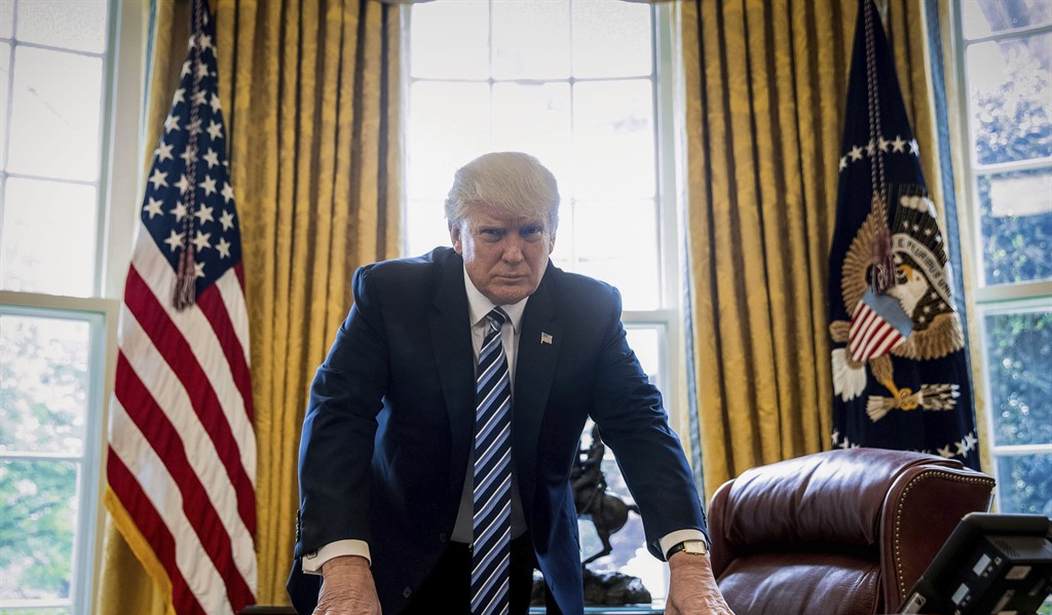Those who expected the change in White House administrations to produce a burst of optimism that would fuel first quarter growth will find themselves disappointed in today’s advance estimate of GDP growth — and so will most everyone else. The Bureau of Economic Analysis calculates that the US economy grew at an annualized pace of 0.7% — the worst result in three years. The stagnation mainly came from a dramatic drop in consumer spending, which grew at the slowest pace in four years:
Real gross domestic product (GDP) increased at an annual rate of 0.7 percent in the first quarter of 2017 (table 1), according to the “advance” estimate released by the Bureau of Economic Analysis. In the fourth quarter of 2016, real GDP increased 2.1 percent.
The Bureau emphasized that the first-quarter advance estimate released today is based on source data that are incomplete or subject to further revision by the source agency (see “Source Data for the Advance Estimate” on page 2). The “second” estimate for the first quarter, based on more complete data, will be released on May 26, 2017.
The increase in real GDP in the first quarter reflected positive contributions from nonresidential fixed investment, exports, residential fixed investment, and personal consumption expenditures (PCE), that were offset by negative contributions from private inventory investment, state and local government spending, and federal government spending. Imports, which are a subtraction in the calculation of GDP, increased (table 2).
Normally PCEs drop off a bit in the first quarter of any year, coming after the spending sprees of Q4 holiday seasons. Over the last few years, that drop has ranged from 0.7 to 2.2 points. This year the drop was more dramatic than usual, falling from 3.5% annualize growth in 2016Q4 to just 0.3% in 2017Q1. Rather than a signal of consumer optimism about the future, it looks like Americans have decided to keep their cash close.
Even the bright spots in this report look rather dim. Private domestic investment, a key indicator of future growth, increased at an annualized rate of 4.3% — but that was a drop from last quarter’s 9.4%. Exports picked up after a bad quarter last year, going from -4.5% to 5.8%, but imports — which drag on GDP — also increased 4.1%, even though that was slower than Q4’s 9%. Final sales of domestic product finished above the overall mark, indicating that inventory exhaustion will force more growth next quarter, but even that only grew 1.6%. However, business investment grew by 9.4%, its best number in three years, and residential investment by 13.7%.
The AP’s Martin Crutsinger picks up on the inventory question, as well as the impact of reduced government spending. Crutsinger also notes that private economists have begun to take a more pessimistic view of 2017 growth:
In addition to warmer weather holding back spending on utility bills, the slowdown also reflected a cutback in restocking of store shelves. The slowdown in inventory rebuilding cut nearly a percentage point from growth in the first quarter. Also acting as a drag was a reduction in government spending, which fell at a 1.7 percent annual rate with both the federal government and state and local governments seeing cuts. …
In unveiling an outline of the administration’s tax proposals on Wednesday, Treasury Secretary Steven Mnuchin said he believed growth above 3 percent would be achievable.
Private economists are more skeptical. They are forecasting growth of this year around 2.2 percent. That would be an improvement from last year’s 1.6 percent, the weakest showing in five years, but far below Trump’s goal. Many analysts believe that the impacts of Trump’s economic program will not be felt until 2018 because they are not expecting Congress to approve some version of Trump’s tax program until late this year.
Reuters also offered some of the sunnier data points, while noting that Q1 reports tend to be unusually low:
The pedestrian first-quarter growth pace is, however, not a true picture of the economy’s health. The labor market is near full employment and consumer confidence is near multi-year highs, suggesting that the mostly weather-induced sharp slowdown in consumer spending is probably temporary.
A measure of private domestic demand increased at a 2.2 percent rate last quarter. First-quarter GDP tends to underperform because of difficulties with the calculation of data that the government has acknowledged and is working to rectify.
The latter may be true, but as noted above, the dropoffs have not been this dramatic in the recent past. BEA has already begun looking at ways to smooth the data, but it’s not clear if they have begun to apply any new adjustments yet. The “full employment” declaration isn’t as reliable, however; it assumes that workers who got sidelined in the Great Recession are never coming back into the workforce. Many of them may not, but they’re still out there and drawing off other resources instead, and that will have an impact on future growth, too.
Trump’s new policies appear to have had one direct impact on the economy, though:
Spending on mining exploration, wells and shafts surged at a record 449 percent rate after rising at a 23.7 percent pace in the fourth quarter, accounting for the rise in nonresidential structures investment.
Eventually this will result in lower energy costs, which will help with start-ups and consumer spending, so that’s a metric to watch in the future. So far, though, happy days aren’t yet here again.








Join the conversation as a VIP Member